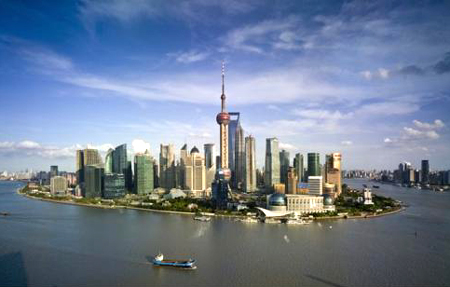The rise of Shanghai's free trade zone
- By Dan Steinbock
 0 Comment(s)
0 Comment(s) Print
Print E-mail chinausfocus.com, September 19, 2013
E-mail chinausfocus.com, September 19, 2013
According to the global financial centers index (2013), the top-four hubs are London and New York, which compete in a class of their own, as well as Hong Kong and Singapore. The Index relies on indices from World Bank, the OECD, and the Economist Intelligence Unit.
In this index, emerging-economy financial hubs are far behind. Shanghai is featured as 24th; somewhere between Vienna and Kuala Lumpur, as well as Melbourne and Paris.
But as they say, “don’t believe the hype.”

FTZ and Financial Reforms Support New Growth Model
Last January, Shanghai’s mayor Yang Xiong unveiled the megacity’s plan to develop the mainland’s first free-trade zone. The FTZ will first span 29 square kilometers in the city's Pudong New Area, including the Waigaoqiao duty-free zone and Yangshan port. It may eventually expand to cover the entire area of Pudong.
As land value has already soared in Pudong and the proximate areas, property developers look as if they had won the lottery.
In the past, Beijing has approved over a dozen bonded areas, which are prototypes of free-trade zones. But Shanghai’s FTZ will be far more extensive and could bypass that of Hong Kong over time. The new Chinese leadership supports the plan.
But change never comes easy. In the past few months, Premier Li Keqiang has had to fight opposition by financial and banking regulators to open Shanghai's financial services sector to foreign investors. The megacity will have a crucial role as China moves from investment and net exports toward consumption.
Shanghai needs accelerated reforms in finance and trade, to boost the megacity’s maturing growth. Despite the absolute expansion of its economy and population, the relative role of Shanghai – and other 1st tier megacities – among all Chinese cities is eroding. With the huge expansion of Chinese medium-size cities of 1-5 million people, the momentum of the property markets has been shifting to 2nd and 3rd-tiered urban centers.
The three-year FTZ plan is moving in parallel with financial reforms, which accelerated last year, when China tightened rules on delisting companies, cut trading costs, and encouraged dividend payments.
For over half a decade, China’s equity, bond, and currency markets have expanded significantly. Reformers hope that commercial banks can grow their lending, expand the fragmented bond market. They hope to move gradually toward the securitization of loan portfolios and to open doors to foreign investors and financial institutions.
Recently, the renminbi also made its debut on the list of the 10 most actively traded currencies, according to a survey by the Bank for International Settlements.
What the new leadership hopes to realize are the financial reforms that are needed in China to support the new economic growth model.






Go to Forum >>0 Comment(s)